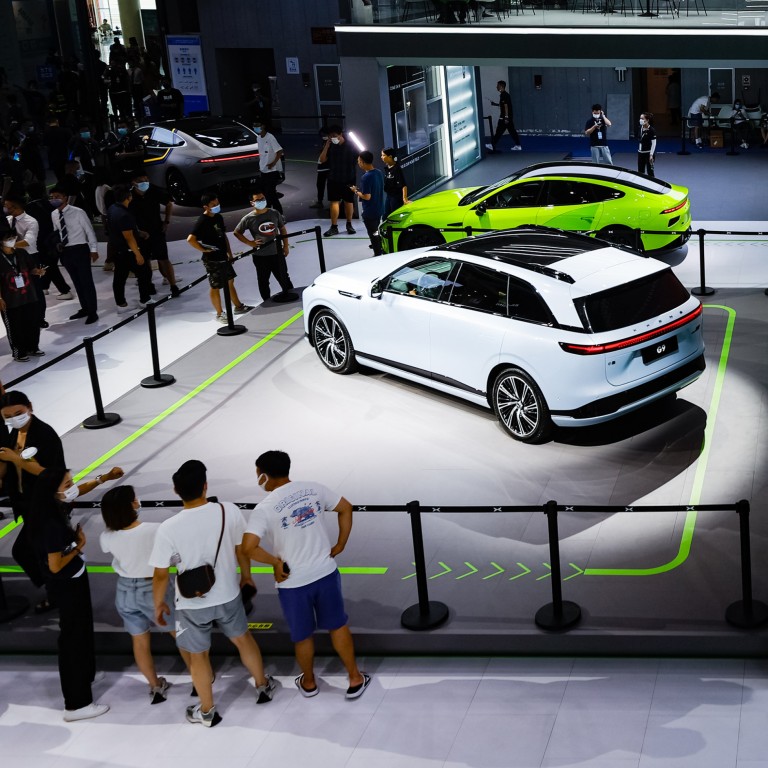
China EV price war: Nio, Xpeng and Li Auto report steep sales plunge as Tesla’s recent discounts lure buyers
- The top three domestic makers of high-end electric cars recorded monthly and year-on-year sales declines in January
- Some of the drops exceed 50 per cent, after Tesla’s early January price cuts appear to have been effective
The country’s top three domestic manufacturers of high-end electric vehicles (EVs) – Nio, Xpeng and Li Auto – all recorded monthly and year-on-year sales declines in January, with some of the drops exceeding 50 per cent.
Most carmakers suspended manufacturing and sales during the Lunar New Year holiday from January 21 to 27, and Beijing phased out a cash subsidy granted to EV buyers as of January 1.
However, analysts also see Tesla’s recent price reductions as a factor.
“Apparently, Tesla’s huge discounts [on its Model 3 and Model Y vehicles] siphoned off drivers’ buying interest in the Chinese-developed smart EVs,” said Gao Shen, an independent analyst in Shanghai. “Overall demand for expensive EVs appears to be weak, which could lead to price wars in the premium EV segment this year.”
As a result, the prices of Tesla’s EVs in China have fallen to their lowest levels since the first vehicle rolled off its Shanghai production line in December 2019.
The tactic appears to have been successful, as Tesla’s sales shot up 76 per cent to 12,654 cars in the week of January 9 to January 15, compared with the previous seven days, according to data compiled by China Merchants Bank.
EVs put China on course to overtake Japan as No. 1 car exporter
On Wednesday, Reuters reported that Tesla would gear up production at its Shanghai Gigafactory in February and March amid surging orders for the Model 3 and Model Y after the price reductions.
The Texas-based carmaker plans to produce nearly 20,000 units a week, or more than 80,000 cars a month, on par with the level in September when it churned out 82,088 units.
Tesla largely reduced output at the Gigafactory 3 in December and January as demand for the two models declined.
In January, the factory operated on only 17 days, with output crimped between the New Year holiday, which ended on January 2, and January 19, ahead of the Lunar New Year holiday.



